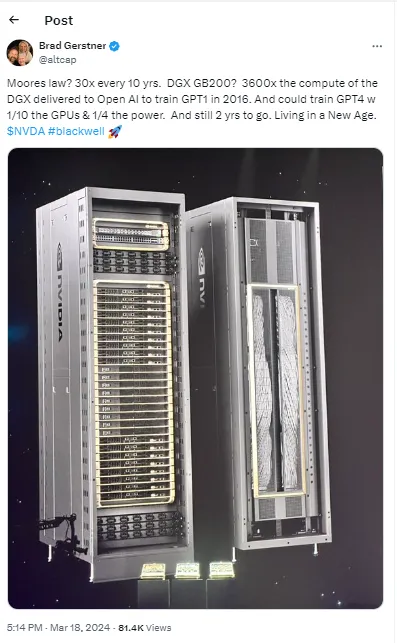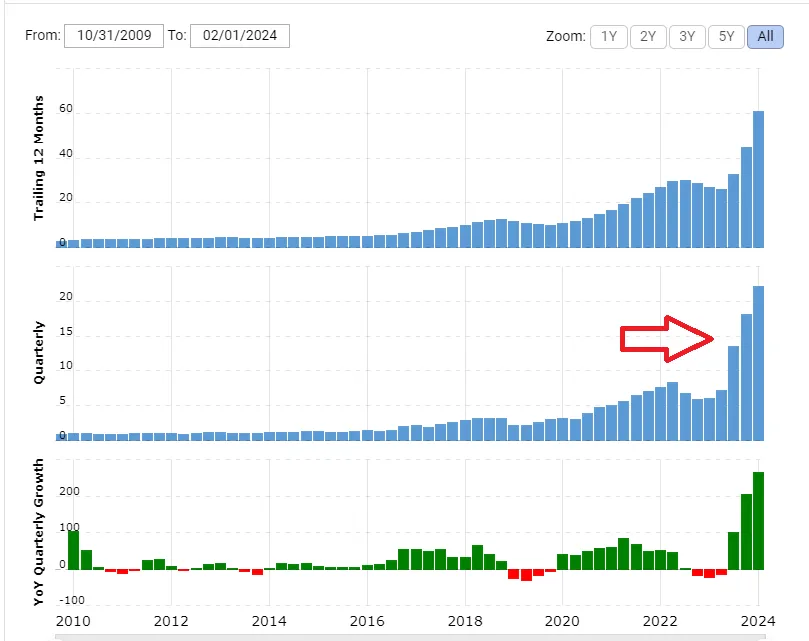How before Web 3.0 reaches mass adoption?
This is a loaded question since there are many variables to consider. It all starts with what Web 3.0 is and how will we know when it is here?
Like always, it is something we realize in hindsight. Few were aware of the formation of Web 2.0 as we are going through it. Even today, there is debate as to when it started exactly.
The official proclamations ultimately mean little. What is important the transformation that is taking place.
To me, this all starts with the foundation. As that is built, things move ahead rapidly.
Web 3.0 Quickly Approach - Faster Than Most Think
Of late, we wrote a great deal about artificial intelligence and the massive strides being made there. This is one of the driving forces many shifts, including the entire premise of the Internet. When we consider what Web 3.0 will look like, AI is a major part of the equation.
Therefore, it is prudent to look at the pace of advancement in this realm to have some idea of what might happen overall.
Here again, we look at the basis. One thing that is inherent in this conversation is semiconductor development. What does chip progress look like?
Most are familiar with Moore's Law. This is something that was used for decades to chart the digital world.
Basically, Moore's Law is an observation that says the number of transistors on an integrated circuit doubles every two years. This is basically held for the last 60 years.
It is something that was compounded by the fact that chip sales grew, over the last half century, at a 13% CAGR. This is what was at the root of the digital explosion.
When it comes to AI, we direct the focus to GPUs.
Moore's Law delivers a 30x increase in capacity over the course of 10 years. Whatever the cost per compute, it will be 30x more powerful, for the same money, a decade later.
Here we have a comparison of the GPU chips being used by OpenAi versus what was used in 2016 to train ChatGPT1.

The chips have a 3600x increase in productivity. As we see, ChatGPT could be trained using 1/10th the GPUs of 2016 while consuming 1/4 the power.
Of course, this is only on part of the equation.
Elon Musk claims that AI compute is doing a 10x every 6 months. This is a much faster pace than 13%.
It is an absurd claim unless accurate.
While we have no way of knowing how true this is, we can see from NVIDIA's revenues, growth is explosive.

In the first quarter of 2023, the company had $7.19B in revenues. The number jumped to $22.1B in the 4th quarter, or a 3x.
Since processing is the foundation of the digital world, we are witnessing an explosion that, at present, far outpaces what Moore's Law achieved.
Naturally, there is no guarantee this will continue into the future. It is likely these numbers level off in some way. However, we are still talking about a much greater multiple than what we saw before.
How Does This Equate To Web 3.0?
Some might be wondering how this translates into Web 3.0 adoption.
As stated, this is the foundation upon which all else will be built. It also starts to bring the idea of ownership into the conversation.
We can easily see how this advancement benefits Web 2.0. Amazon, Facebook (Meta), Google, and X all stand to profit. We know the major technology entities are starting to implement this technology. Isn't this a case of the "rich getting richer"?
It might seem like that on the surface. However, if we start to pore deeper into these discussions, we see where other issues arise.
At this point, it makes sense to question ownership. For example, what do you think the future of AI generated music is? How will this affect human content?
The pace of advancement means that we will have the ability to create "professional" level songs within the next 12-18 months. Today, the quality is already to the point where AI generated jingles are sufficient for many use cases. As voice technology improves, we will likely see entire songs created that rival human ones.
Does this mean that AI will take over? Yes although that does not equate to an end of human music. There will still be a niche. We still have people who get paid a lot money for paintings. However, the portrait market died with the introduction of the camera.
AI is going to be built into most applications. The amount of activity generated is going to skyrocket. This will, naturally, generate a great deal more data, something that many are calling "the new oil".
Again, who owns and benefits from this data.
Under Web 2.0, the answer is clear. The same companies mentioned above are the ones enjoying the financial results. The users receive very little (if anything).
Here is where we see the Web 2.0 model on full display.
Web 3.0 presents a completely different alternative. Whether we are looking at the base or the application layer, we can see how tokenization alters this. Individuals have the ability to benefit from the increase in data and processing. By having a piece of the digital real estate, as the value grows, token holders will see their asset appreciate.
The compounding we see above is thus applied to Web 3.0. The totality of processing and data tied to this realm keeps increasing. This will follow a similar curve as more power is applied to the entire system. For example, chatbot technology, while driven by major corporations, can be forked and utilized for different purposes. Here is where open source is beginning to rival some of the major players.
As the numbers grow, we see the exponential occurring.
The Application Layer
So far, we simply focused upon the foundation. For the moment, this is all we really have.
However, this is also the point where the discussion can move to the next level. As the foundation gets stronger, we start to see the application layer improve.
There is going to be a lag since we do not have a great deal of development at this level. It is not of major concern since application developers are plentiful. The number of people who can take these technology and integrate then into an app is much greater than, say, those who can program blockchains.
It could also be the next major gold rush over the next few years.
The simple reality is what application developers will be able to build over the next few years is going to far outpace that of only a couple years ago. They are being handed a lot more power which only fosters even more innovation.
When this is spread across a sector like blockchain, we see how the applications become a driving force for adoption. industries start to get disrupted because of the onslaught of "businesses" that suddenly appear. Of course, these are all in the digital world, providing a massive shift in attention.
Hence we show how the "attention economy" further transitions.
As we can see, things are moving quickly. A decade from now we will realize how fast the transition occurred. It might seem slow as we are going through it but, on a relative basis, it is racing ahead.
From a user perspective, they are always the last to join in. It is similar to video conferencing. The technology improved over a decade with the number of users steadily increasing. Suddenly, by 2021, due to COVID, most realized the capabilities of this "new" technology.
That is how it always happens and Web 3.0, or more accurately the services, will follow a similar path.